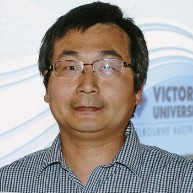Second Edition of Technologies for Water and Wastewater Treatment
A special issue of International Journal of Environmental Research and Public Health (ISSN 1660-4601). This special issue belongs to the section "Environmental Science and Engineering".
Deadline for manuscript submissions: closed (30 September 2023) | Viewed by 1643
Special Issue Editors
Interests: water treatment; biopurification; membrane; virus filtration; electrocoagulation
Special Issues, Collections and Topics in MDPI journals
Interests: membrane distillation; wastewater treatment; desalination; advanced oxidation; membrane filtration; NF; RO
Special Issues, Collections and Topics in MDPI journals
Special Issue Information
Dear Colleagues,
Freshwater scarcity is a worldwide issue, and can be partially attributed to pollution and climate change caused by urbanization and industrialization. Water recycling from wastewater, seawater and stormwater are being used to fulfil the increasing demand for freshwater. Different treatment techniques have been employed to convert wastewater for industrial and domestic purposes. Conventional treatment methods such as aeration, coagulation, activated sludge and flocculation have been widely used in combination with membrane technology and advanced oxidation, to remove contaminants and deactivate any pathogens that may be present. The operation cost, greenhouse gas emission, energy consumption, and treatment efficiency of these processes are the main issues that must be addressed. The different sources of the wastewater also limit the employment of different technologies and optimization processes.
This Special Issue, “Second Edition of Technologies for Water and Wastewater Treatment”, will bring together articles on studies of technology employed in water and wastewater treatment. The Special Issue is requesting articles on all aspects of technology related to water treatment processes, including manuscripts on cost/operation analysis, troubleshooting/alleviation in existing treatment methods, and the application of new techniques in water treatment.
Prof. Dr. Ranil Wickramasinghe
Dr. Jianhua Zhang
Guest Editors
Manuscript Submission Information
Manuscripts should be submitted online at www.mdpi.com by registering and logging in to this website. Once you are registered, click here to go to the submission form. Manuscripts can be submitted until the deadline. All submissions that pass pre-check are peer-reviewed. Accepted papers will be published continuously in the journal (as soon as accepted) and will be listed together on the special issue website. Research articles, review articles as well as short communications are invited. For planned papers, a title and short abstract (about 100 words) can be sent to the Editorial Office for announcement on this website.
Submitted manuscripts should not have been published previously, nor be under consideration for publication elsewhere (except conference proceedings papers). All manuscripts are thoroughly refereed through a single-blind peer-review process. A guide for authors and other relevant information for submission of manuscripts is available on the Instructions for Authors page. International Journal of Environmental Research and Public Health is an international peer-reviewed open access monthly journal published by MDPI.
Please visit the Instructions for Authors page before submitting a manuscript. The Article Processing Charge (APC) for publication in this open access journal is 2500 CHF (Swiss Francs). Submitted papers should be well formatted and use good English. Authors may use MDPI's English editing service prior to publication or during author revisions.
Keywords
- wastewater
- membrane
- water treatment
- water pretreatment
- desalination






